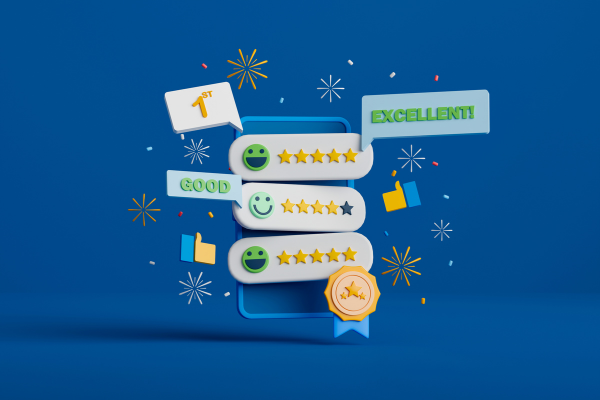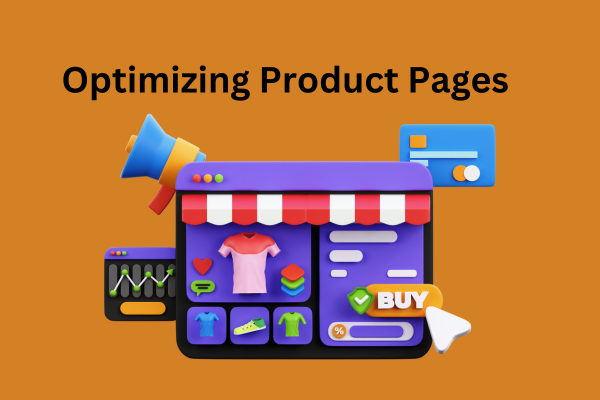Mastering the Symphony of Product Page Optimization: A Guide to Boosting Conversions
Imagine your online store as a magnificent symphony hall. Every element – from the layout to the images – is like a well-rehearsed orchestra, guiding visitors toward the grand crescendo: a completed checkout. But just as one flat note can sour an entire performance, a poorly optimized product page can cause potential customers to tune out and leave without buying.
Fear not, maestro! With the right tools and strategies, you can transform hesitant browsers into enthusiastic buyers, ensuring your product pages hit all the right notes. In this guide, we’ll explore the art of product page optimization for conversions, giving you the secrets to creating harmonious customer experiences that drive sales.
First Movement: Setting the Stage with Compelling Copy
The text on your product page is like the first violin in an orchestra – it sets the tone. But words alone won’t sell a product. They need to engage, inspire, and evoke emotion. Dry, technical descriptions will leave your audience unmoved, but compelling copy will create a sense of urgency and desire.
1. Headline Harmony: Captivate from the First Note
Your headline is the first thing your audience sees, so it needs to grab attention and convey the key benefit of your product. Instead of “Non-Stick Stainless Steel Skillet with Silicone Handle,” aim for something that paints a picture and promises a solution, like “Unleash Your Inner Chef: The Pan That Does A compelling headline needs to be concise, focused on benefits, and designed to spark curiosity.
2. Feature Flurry: Highlight Benefits Over Features
Customers don’t just want to know what your product is – they want to know what it does for them. Listing features is important, but what truly resonates is explaining the benefits behind them. Rather than simply saying “Ultra-fast processor,” try “Binge-watch your favourite shows without a single buffer – smooth streaming, guaranteed.” Help customers visualize how their lives will improve by using your product.
3. Storytelling Serenade: Make Your Product the Hero
Storytelling is a powerful tool in marketing. Instead of simply listing facts, weave your product into a narrative that reflects your customers’ desires. Use real-life scenarios where your product is the hero, solving a problem or enhancing an experience. Whether it’s a cozy night in or a high-energy adventure, show your product in action, sparking emotion and connection.
Second Movement: Visual Virtuosity – Show, Don’t Tell
A picture, as they say, is worth a thousand conversions. High-quality visuals can be the difference between a passing glance and an engaged potential buyer. Your product images need to be captivating, clear, and abundant – so much so that customers can imagine themselves using your product.
1. High-Resolution Rhapsody: Quality is Key
Blurry or poorly lit photos are like off-key notes in an otherwise beautiful melody. They distract and disappoint. High-quality images are essential for building trust and showcasing your product’s details. Make sure your images are sharp, well-lit, and professionally taken, offering a true representation of what customers can expect.
2. Multiple Angles Applause: Give Customers a Full Experience
When shopping online, customers can’t physically interact with your product, so it’s crucial to give them a virtual hands-on experience. Provide multiple images from various angles, zoom in on key features, and consider 360° views that allow visitors to inspect every inch of your product. The more comprehensive your visuals, the more confident your buyers will feel.
3. Lifestyle Crescendo: Create Aspirational Scenes
Don’t stop at product photos – take it a step further by creating lifestyle images that show your product in use. Whether it’s a sleek kitchen appliance in a bustling chef’s kitchen or a fashionable handbag worn by a chic model on the streets, these images help customers imagine how your product can enhance their own lives. Lifestyle images build an emotional connection and turn interest into desire.
Third Movement: Trustful Transitions – Building Bridges to “Add to Cart”
Once your audience is hooked, the journey to checkout should be as smooth as possible. The trust you’ve built through compelling copy and striking visuals can easily be lost if your product page lacks clarity or if the purchase process becomes cumbersome. Every step should lead seamlessly to the next, guiding visitors toward conversion with confidence.
1. Clear Calls to Action: Don’t Leave Them Guessing
Your call to action (CTA) is the conductor of the entire experience – it needs to be strong, visible, and action-oriented. Avoid vague or passive phrases like “Learn More.” Instead, use direct, commanding language like “Buy Now,” “Add to Cart,” or “Get Yours Today.” Make sure the CTA stands out visually, so it’s clear where the customer should click next.
2. Social Proof Symphony: Let Your Customers Speak for You
Reviews, testimonials, and ratings are your backup vocals, providing crucial trust signals that reassure potential buyers. Showcase positive feedback prominently on your product page – especially if you have a large number of reviews. User-generated content such as photos or videos from happy customers can also boost credibility and encourage more sales.

3. Frictionless Finale: Streamline the Checkout Process
Even the most captivated audience will walk out before the finale if the path to checkout is too complicated. Simplify the process by offering guest checkout options, multiple payment methods, and transparent shipping information. Remove unnecessary steps, and ensure your customers have everything they need to complete the purchase with ease. An intuitive, fast checkout process can significantly reduce cart abandonment rates.
Bonus Encore: A/B Testing for a Harmonious Performance
Every audience is unique, and what works for one might not work for another. This is where A/B testing comes into play. Experiment with different headlines, images, CTA buttons, and page layouts to see what resonates most with your audience. Data is your best friend here – it provides valuable insights into customer preferences and helps you fine-tune your product pages for maximum conversions.
Remember, optimizing your product pages isn’t a one-time gig. It’s a continuous process of testing, learning, and improving. By consistently refining your approach, you’ll be able to keep your audience engaged and your cash registers ringing.
Finale: Conduct Your Product Pages to Conversion Glory
Just like a well-executed symphony, a beautifully optimized product page will leave your customers cheering for more. With compelling copy, captivating visuals, trust-building elements, and a seamless checkout process, you can transform a simple product page into a powerful conversion engine.
So, maestro, take your place on the podium, raise your baton, and let the conversion symphony begin!

